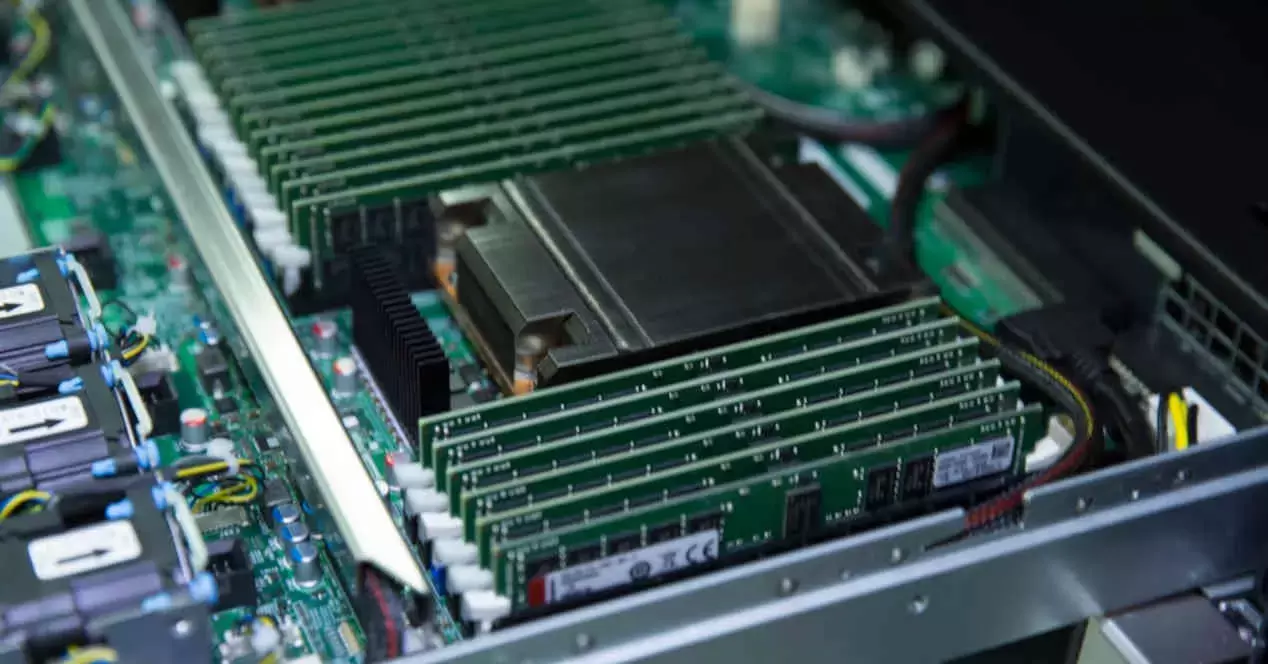一次 Linux 5.4 内核启动失败分析
在我司一台 x86 服务器上遇到了一个奇怪的问题:这台服务器上一直以来使用的是从 linux-stable 主线的 lts 版本自行编译的内核,具体来说使用的是5.15.15版本内核。
由于驱动需要我尝试在上面编译和引导5.4.172内核,但无法正常启动,内核打印显示找不到任何分区。初步判断是硬盘控制器驱动没有加载,但是驱动已经以模块形式编译了(该服务器使用的是一个博通 RAID 控制器,对应驱动为 megaraid_sas)。
无奈我尝试将该驱动编译到内核,这次内核成功找到了所有分区,但却无法找到内核 cmdline 指定的 rootfs uuid:1
2
3
4
5
6
7
8
9
10
11
12
13VFS: Cannot open root device "UUID=xxxxxxxxx" or unknown-block(0,0): error -6
Please append a correct "root=" boot option; here are the available partitions:
0800 34441003008 sda
driver: sd
0801 14680000 sda1 afc0d02a-b8be-407c-8ac6-ob3ac86a26d
0802 101376 sda2 eef76d84-e51a-49cb-b16b-a76fa7155b13
0803 16384 sda3 df9f72aa-cb58-blab-bl48f56be269
0804 22021166 sda4 c11f17f3-7ac6-l667-aaf0-a748cfbc193d
0805 31236209184 sda5 yyyyyyyyyy
Kernel panic - not syncing: VFS: Unable to mount root fs on unknown-block(0,0)
CPU:31 PID:1 comm swapper/0 Not tainted 5.4.172 #14
Hardware name: Dell Inc. PowerEdge R750/04V528, BIOS 1.7.4 06/27/2022
这里 rootfs 为 sda5,uuid xxxxxxxxx 通过检查 blkid 和 lsblk -f 输出可以确定是正确的。列表中 sda5 后的 uuid yyyyyyyyyy 与 xxxxxxxxx 并不相同,但在 blkid 输出中可以看到它是 sda5 的 PARTUUID:1
2
3
4% sudo blkid
/dev/sda5: UUID="xxxxxxxxx" BLOCK_SIZE="4096" TYPE="ext4" PARTUUID="yyyyyyyyyy"
/dev/loop1: TYPE="squashfs"
/dev/loop19: TYPE="squashfs"
PARTUUID 与 UUID
那么这里的 PARTUUID 是什么?
其实 UUID 指的是 Filesystem UUID,即文件系统 UUID;相对的 PARTUUID 指的就是 Partition UUID,即分区的 UUID。顾名思义 Filesystem UUID 是储存在文件系统中的,而 Partition UUID 是储存在分区表中的。
Linux 中的大多数文件系统都支持 Filesystem UUID,例如 ext2/3/4、XFS。但 FAT 和 NTFS 对 UUID 的支持可能没有那么好。[1]如果没有一个可用的 initramfs 或者 initramfs 为空,内核就无法获取UUID(也不能获取 LABEL,即卷标)[2]。
实际上,内核并不会处理 UUID= 这种标识符,而是会忽略该选项,由 initramfs 中的工具(如 udev)发现 Filesystem UUID 对应的设备并切换 rootfs。1
2
3
4
5
6
7
8
9
10
11
12
13
14
15
16
17
18
19
20
21
22
23
24
25
26
27
28
29
30
31/*
* Convert a name into device number. We accept the following variants:
*
* 1) <hex_major><hex_minor> device number in hexadecimal represents itself
* no leading 0x, for example b302.
* 2) /dev/nfs represents Root_NFS (0xff)
* 3) /dev/<disk_name> represents the device number of disk
* 4) /dev/<disk_name><decimal> represents the device number
* of partition - device number of disk plus the partition number
* 5) /dev/<disk_name>p<decimal> - same as the above, that form is
* used when disk name of partitioned disk ends on a digit.
* 6) PARTUUID=00112233-4455-6677-8899-AABBCCDDEEFF representing the
* unique id of a partition if the partition table provides it.
* The UUID may be either an EFI/GPT UUID, or refer to an MSDOS
* partition using the format SSSSSSSS-PP, where SSSSSSSS is a zero-
* filled hex representation of the 32-bit "NT disk signature", and PP
* is a zero-filled hex representation of the 1-based partition number.
* 7) PARTUUID=<UUID>/PARTNROFF=<int> to select a partition in relation to
* a partition with a known unique id.
* 8) <major>:<minor> major and minor number of the device separated by
* a colon.
* 9) PARTLABEL=<name> with name being the GPT partition label.
* MSDOS partitions do not support labels!
*
* If name doesn't have fall into the categories above, we return (0,0).
* block_class is used to check if something is a disk name. If the disk
* name contains slashes, the device name has them replaced with
* bangs.
*/
dev_t name_to_dev_t(const char *name)
上面内核源码中的注释说明了内核能够处理的几种设备标识符,其中并没有 UUID,大概看了下应该是在 md_setup_drive 中调用 name_to_dev_t 来解析标识符。
也可以尝试把 UUID 更改为一个不存在的值,最终控制台将输出如下内容:1
2
3
4
5
6
7
8
9
10
11
12
13
14
15
16
17Begin: Loading essential drivers ... done.
Begin: Running /scripts/init-premount ... done.
Begin: Mounting root file system ... Begin: Running /scripts/local-top ... done.
Begin: Running /scripts/local-premount ... done.
Begin: Waiting for root file system ... Begin: Running /scripts/local-block ... done.
done.
Gave up waiting for root file system device. Common problems:
- Boot args (cat /proc/cmdline)
- Check rootdelay= (did the system wait long enough?)
- Missing modules (cat /proc/modules; ls /dev)
ALERT! UUID=50303285-93e1-49a2-92a0-24868766cff1 does not exist. Dropping to a shell!
BusyBox v1.30.1 (Ubuntu 1:1.30.1-7ubuntu3) built-in shell (ash)
Enter 'help' for a list of built-in commands.
(initramfs)
很明显,这些输出内容是由 initramfs 中的程序或脚本输出的,内核本身并未输出错误信息。这也说明了 UUID= 标识符并非由内核处理。
内核中如果包含了所有所需的文件系统驱动,那么应该能够自行获得所有文件系统的 UUID,似乎并没有通过用户程序的必要。我也没有在网上发现这一做法的必要性的说法,因此推断该策略的目的可能是实现一定程度的解耦,毕竟正常情况下服务器系统都会加载 initramfs,而更精简的嵌入式领域则少有储存硬件变动的需求。通过用户程序控制该过程也能获得更多的灵活性。
这样看来,结合之前遇到的驱动问题,可以判断由于某些原因 initramfs 没有被正常加载,或者 initramfs 内容有误。
解决方案 A:让 grub 使用 PARTUUID 或路径
这里需要说明的是,使用 UUID 作为作为 rootfs 标识符是 grub 的默认行为。每当要从源码安装新内核时,一般做法是执行 make install,这背后执行了内核安装、DKMS模块编译、initramfs/initrd 生成、grub.cfg 生成等一系列操作。为了控制生成 grub.cfg 的默认行为,需要修改 /etc/default/grub 配置文件。
这里为了让 grub 在生成 grub.cfg 时使用路径(即 /dev/sdXX),可以在 /etc/default/grub 中添加:1
GRUB_DISABLE_LINUX_UUID=true
但如果服务器的硬盘连接顺序发生变化(或者其他可能改变硬件拓扑的情况),rootfs 在系统中的路径就可能发生变化(如从 /dev/sda5 变为 /dev/sdb5),导致系统无法启动。这也是 grub 默认使用 UUID 的原因。
因此我们可以选择使用 PARTUUID,从 grub 2.04 版本[3]开始,支持了一个新的选项 GRUB_DISABLE_LINUX_PARTUUID,通过与 GRUB_DISABLE_LINUX_UUID 结合可以让 grub 使用 PARTUUID 作为标识符[4]:1
2GRUB_DISABLE_LINUX_UUID=true
GRUB_DISABLE_LINUX_PARTUUID=false
另外要注意的是,只有 GPT 分区表才有标准的 UUID。MBR 来说并没有一个真正的 UUID,它的 PARTUUID 要短得多,因为它实际上是 PTUUID + 分区编号。因为它们不够长,无法确保唯一性,并且无法保证分区一定存在 PARTUUID。具体解释参见:partition - Are UUIDs and PTUUIDs important for MBR disks? If so, how do I create them on my own? - Unix & Linux Stack Exchange
分析 initramfs 加载
解决方案 A 只是治标不治本,initramfs 被正常加载才是我们最终的目标。
对比了 5.4.172 和 5.15.15 内核打印的区别,在 5.15.15 中找到两条关键打印:1
2
3 RAMDISK: [mem 0x3900b000-0x3fffdfff]
...
Trying to unpack rootfs image as initramfs...
在内核中搜索了下,第一个打印来自于 reserve_initrd:1
2
3
4
5
6
7
8
9
10
11
12
13
14
15
16
17
18
19
20
21
22static void __init reserve_initrd(void)
{
/* Assume only end is not page aligned */
u64 ramdisk_image = get_ramdisk_image();
u64 ramdisk_size = get_ramdisk_size();
u64 ramdisk_end = PAGE_ALIGN(ramdisk_image + ramdisk_size);
u64 mapped_size;
if (!boot_params.hdr.type_of_loader ||
!ramdisk_image || !ramdisk_size)
return; /* No initrd provided by bootloader */
initrd_start = 0;
mapped_size = memblock_mem_size(max_pfn_mapped);
if (ramdisk_size >= (mapped_size>>1))
panic("initrd too large to handle, "
"disabling initrd (%lld needed, %lld available)\n",
ramdisk_size, mapped_size>>1);
printk(KERN_INFO "RAMDISK: [mem %#010llx-%#010llx]\n", ramdisk_image,
ramdisk_end - 1);
准备在内核中加入一些打印调试下,结果发现这次生成的内核出现了 unpack initrd 的打印,但仍然无法使用 UUID 启动。
尝试在自己的 Ubuntu 22.04 LTS 虚拟机(并且软件包均更新到最新版本)上也安装了5.4.172内核,意外发现与服务器上的现象一致。通过串口将错误现场的内核打印输出到文件中,发现以下打印:1
2[ 1.839668] Unpacking initramfs...
[ 1.843910] Initramfs unpacking failed: invalid magic at start of compressed archive
出现了明确的错误,这就很好解决了。在网上查了下该错误,是因为目前较新的发行版都使用 zstd 作为 initramfs 压缩算法,而该算法在 5.10 内核中才得到支持。[5]
解决方案 B:配置使用 gzip 压缩 initramfs
对于 Ubuntu 来说,可以修改 /etc/initramfs-tools/initramfs.conf 文件,将 COMPRESS=zstd 修改为 COMPRESS=gzip[6]。再次执行 sudo make install 或者 sudo update-initramfs -c -k 5.4.172 即可。
在服务器上修改了下,可以使用 UUID 标识 rootfs 了。但服务器之前并没有 unpack 出错的打印,打印内容也不太一样,根据代码来看是启用了 CONFIG_BLK_DEV_RAM 的原因:1
2
3
4if (IS_ENABLED(CONFIG_BLK_DEV_RAM))
printk(KERN_INFO "Trying to unpack rootfs image as initramfs...\n");
else
printk(KERN_INFO "Unpacking initramfs...\n");
这个选项是给 initrd 使用的[7],由于这里仅判断了该选项是否开启,所以和实际加载的是 initrd 还是 initramfs 并没有关系,这里我们使用的是 initramfs。
linux - Why can’t I specify my root fs with a UUID? - Unix & Linux Stack Exchange ↩︎
Gentoo Forums - How to make GRUB pass PARTUUID to the kernel ↩︎
Initramfs unpacking failed: invalid magic as start of compressed - Support - Manjaro Linux Forum ↩︎
boot - Having trouble with “Initramfs unpacking failed: Decoding failed” solutions - Ask Ubuntu ↩︎
Linux Kernel Driver DataBase: CONFIG_BLK_DEV_RAM: RAM block device support ↩︎
一次 Linux 5.4 内核启动失败分析




